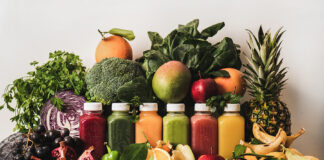
 Maria Pearman is the beverage practice leader at GHJ. She has more than 15 years of experience providing accounting and advisory services to clients, and specializes in internal accounting processes, financial reviews, budgeting, cash flow forecasting, financial strategy and succession planning.
Maria Pearman is the beverage practice leader at GHJ. She has more than 15 years of experience providing accounting and advisory services to clients, and specializes in internal accounting processes, financial reviews, budgeting, cash flow forecasting, financial strategy and succession planning.
Here, she shares advice for food and beverage leaders about lessons to take from the pandemic, future-proofing their operations, and some regulatory changes to look out for.
What are the most important lessons the food and beverage industry should take away from the events of the past few years?
MP: The industry has been incredibly resilient, especially manufacturers who also have a retail outlet, such as breweries. The pandemic forced companies to think creatively about how to get their product into the hands of consumers when on-premises consumption was no longer an option. Many restaurants and processors showed an amazing degree of creativity to keep their workforce and to use employees in new and different ways in the face of local and state regulations that changed rapidly.
The pandemic also reminded us of the importance of keeping a safety net of cash on hand. In the early days of the pandemic — before subsidy funds like PPP and the Employee Retention Credit were made available — many food and beverage businesses reported that they would not be able to survive for as little as three months with lockdown restrictions. COVID-19 was a sobering moment that made us realize what a lifeline that cash can be. I recommend that all food and beverage companies keep three to six months of operating expenses on hand at all times.
What are the top steps F&B companies can take to mitigate the risk of facing similar problems in the future?
MP: First, cultivate multiple vendor relationships for each part of your supply chain. Food and beverage companies always need options — regardless of supply chain issues.
Second, don’t take your eye off of cash. Companies will sometimes buy all they can when a supply item becomes available because it is unknown if it will be available in the future. This is understandable, but to trade inventory for liquidity is risky.
Third, I cannot overemphasize the importance of a good relationship with your banker — access to a line of credit can be a key component to navigating supply chain turbulence. If you do not already have a banker who understands your industry and your business, now is the time to find the right professional. Share financial results with your banker often. Have face-to-face meetings with them. Put in the time to develop a relationship before you need to ask for help.
Fourth, optimize production planning strategies. A detailed production plan allows a producer to fine-tune their materials needs. It also gives a longer runway for purchasing decisions.
What are the most important investments F&B companies can make right now to future-proof their operations?
MP: Strengthen your management bench. This is important for so many reasons, but one reason that I feel is overlooked is the correlation of strong management and successful fundraising. Food and beverage is a crowded field. To break through, a company must raise enough capital to significantly invest in sales and operations. Potential investors put a lot of stock into the sophistication of the key leaders and are more likely to invest in teams that have a proven track record of success.
What do F&B companies need to know about the current and future regulatory environment and its impact on their business?
MP: Most notably, the Food Safety Modernization Act continues to evolve. The Act was adopted in 2011 and is intended to prevent outbreaks of foodborne illness. The Act gives broad authority to the Food and Drug Administration to implement safety measures in the food supply chain. The FDA continues to issue new and revised guidance on the policy that governs growers, manufacturers, importers, and third-party certification organizations.
Regulations affecting the food industry are also changing at the state level. California and New York have both passed food waste bills that went into effect on Jan. 1, 2022. The laws are designed to bridge the gap between the needs of individuals affected by food insecurity and food waste by producers, wholesalers, and retailers. California SB1383 and New York’s Food Donation and Food Scraps Recycling law are the first of their kind, but many other states may soon follow course.
What do F&B companies need to know about the current legal environment and its impact on their business?
MP: Beware of predatory litigation. There are attorneys who specialize in scrutinizing food and beverage labels, looking for a reason to raise a legal issue. This is their entire business model. In most cases, these claims will settle out of court, but it can be costly and a needless distraction for food and beverage companies. In particular, “better for you” kind of claims are a popular target. Before making any such claim, have it reviewed by an attorney who is familiar with FDA regulations.
The same type of claim comes up often when a product may be named after—or references—a particular geography but is actually manufactured in a different place. For example, a tropical-themed beverage may be made in New England. Litigation has arisen claiming false advertising. Be very careful how your information is presented on your labels.










